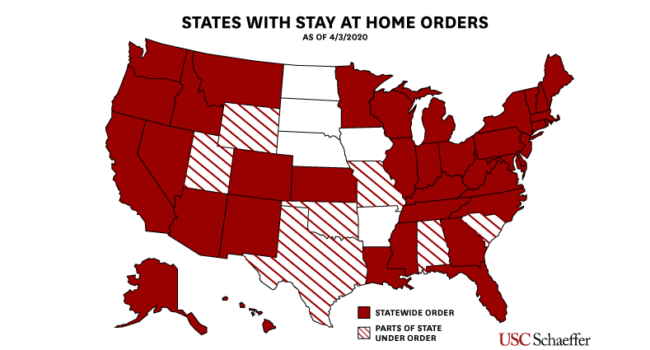In 2020 when Corona virus of at its peak and almost the entire world was shut, there were measures taken by government and authorities for citizens to follow of States with stay at home orders. Unvaccinated people are encouraged to wear masks indoors in public places where social detachment cannot be sustained.
Below are the measures taken by the government for states with stay at home orders
-Mayors can instruct people over 2 years of age who are vaccinated not to wear masks, except in limited areas such as schools, health facilities and when using public transport. While states that considered reopening, they were lifting specific restrictions on businesses, but concealment and social dissociation rules that restrict assemblies remain in place. Masks must be worn in K-12 schools until the end of the school year.
-Strict local ordinances can come into effect if local conditions do not meet state requirements. Some state laws override laws that are incompatible with emergency ordinances, but most others give the governor emergency powers to suspend normal procedures for conducting state business in strict compliance. Wisconsin allows shortened emergency rules, but they can take several weeks, which can mean a devastating delay.
-Each State and territory have the power to adopt its own laws and directives on the protection of public health, and competences vary in the nature and timing of the States with Stay at Home Orders issued and the conditions of residence associated with them:
Between March 1 and May 31st 2020, 42 states and territories issued home stay orders, affecting 2,355 (73%) of the 3,233 US counties. States and municipalities across the country have begun implementing mandatory residency requirements and other social dissociation measures, including school closings, with many commencing non-essential businesses in some states.
-Washington, D.C., Virginia and Maryland introduced similar voluntary home-stay orders in the third week of March, with more coordinated mandatory orders announced on March 30. Governors of Idaho and Tennessee extended their stay statewide at home until April 30, and Kansas Governor Laura Kelly extended her order until May 3.
Also Read : Rhode Island Covid Cases
States with stay at home orders – Measures
-With little testing available and no significant federal response beyond the imposition of international travel restrictions, in March, at a time when the president downplayed the threat of COVID-19, some jurisdictions took matters into their own hands and began to implement social dissociation measures. By mid-May, all 50 states had begun easing restrictions, trying to reconcile reopening the economy with protecting public health.
-Ron DeSantis signed an executive order on May 3 lifting local restrictions on businesses and individuals under COVID-19:
The state does not have such orders, but a number of local guidelines suggest residents should stay indoors. The order does not stop political subdivisions from issuing regulations to protect the health, safety and well-being of their residents.
Last September, Ron DeSantis (R) lifted most of the statewide restrictions on corporations related to the coronavirus and lifted fees and penalties for individuals who violated social dissociation practices and obscured mandates. Brian Kemp (R-OH) signed an executive order on May 1 that lifted remaining restrictions on businesses. He allowed stores such as tattoo parlors, gyms, bowling alleys and massage parlors to reopen from April 27 after state residency permits expired on April 30.
–Jared Polis replaced his “States-with-stay-at-home” orders on April 27 with a “safe home order” that allowed roadside pickups and real estate demonstrations. Alabama and Maine have switched to the “safe home” model, which bans gatherings of more than 10 people, limits the capacity of retail stores and allows for the opening of parks and outdoor beaches. States and territories that imposed compulsory residence saw a decrease in population movements in most counties.
-Governors in Utah, Wyoming, South Carolina and Oklahoma have refused to issue national mandatory home-stay orders, but local officials have taken it upon themselves to instruct people to stay home. Pete Ricketts has banned gatherings of more than 10 people, and some speculate that many residents will ignore the stricter restrictions. Asa Hutchinson and its targeted efforts to contain the virus are designed to protect thousands of people who have lost their jobs, including clothing store employees who have yet to open.
Also Read : David Lander – personal life and Career
